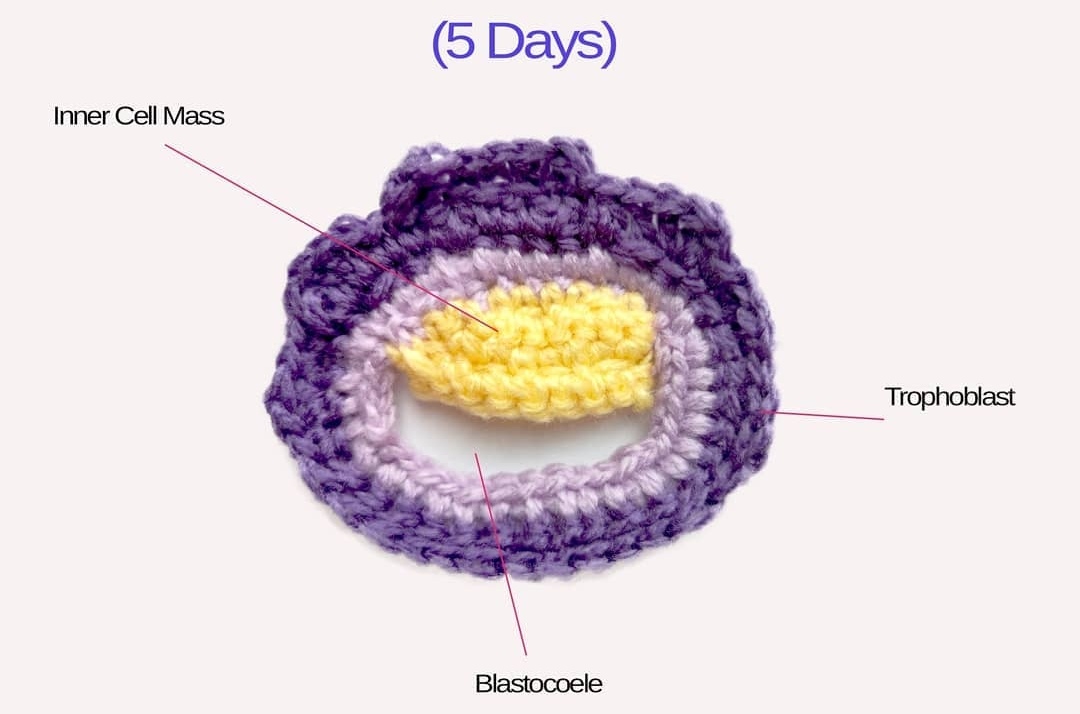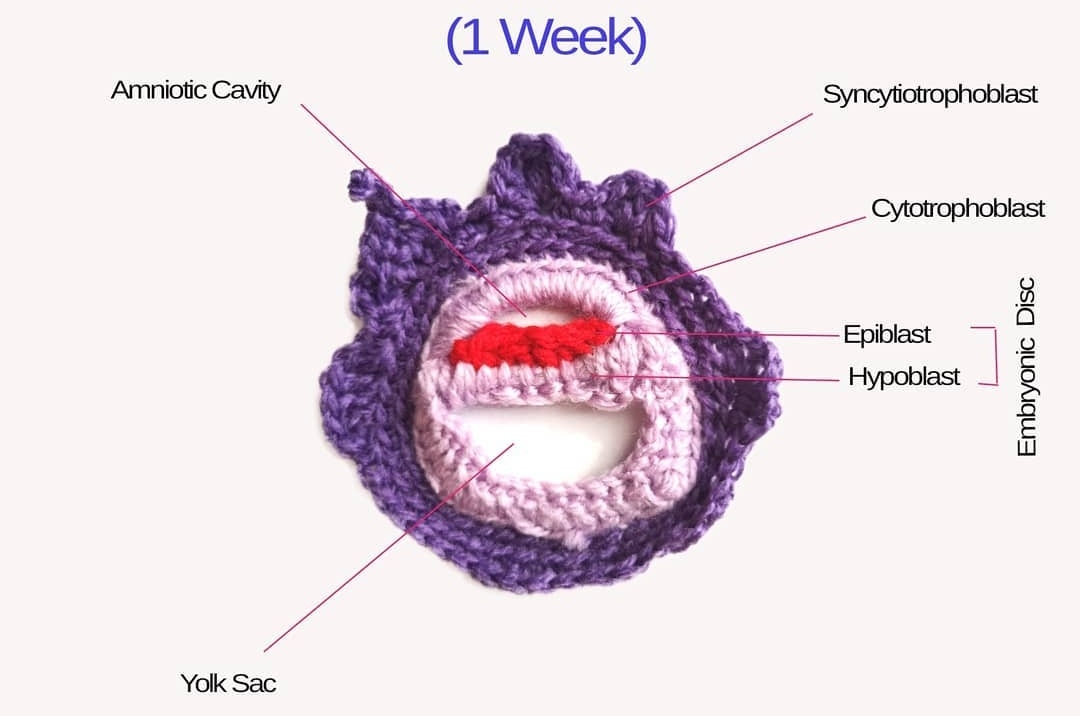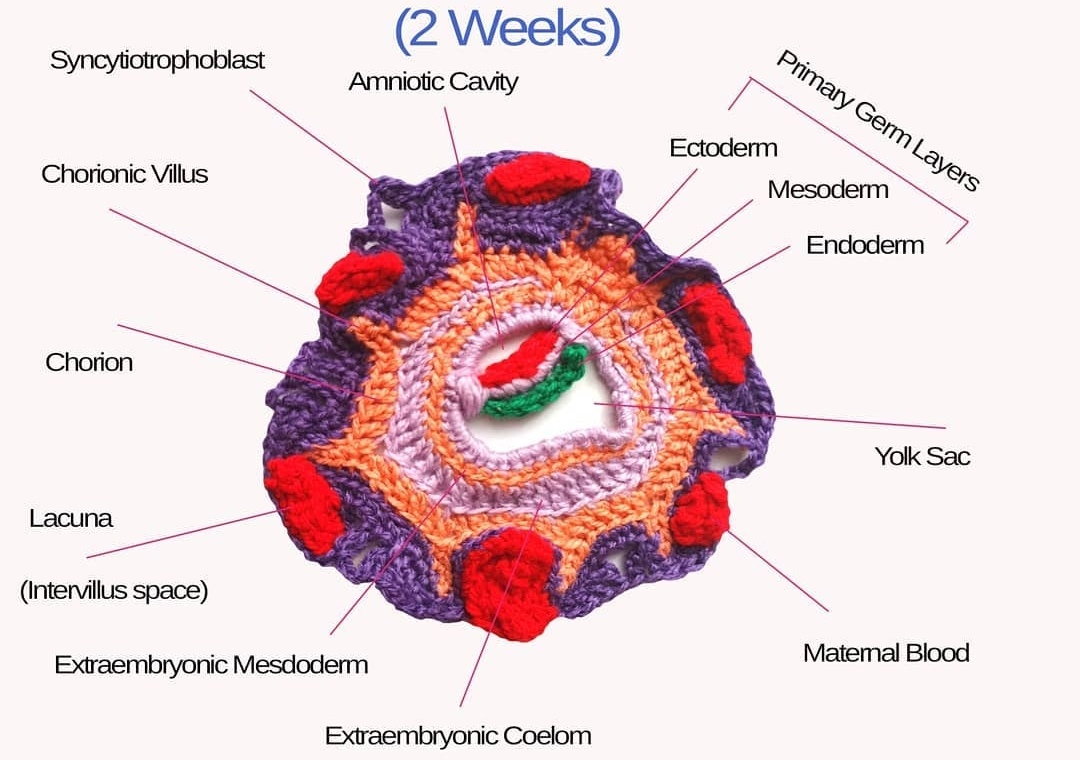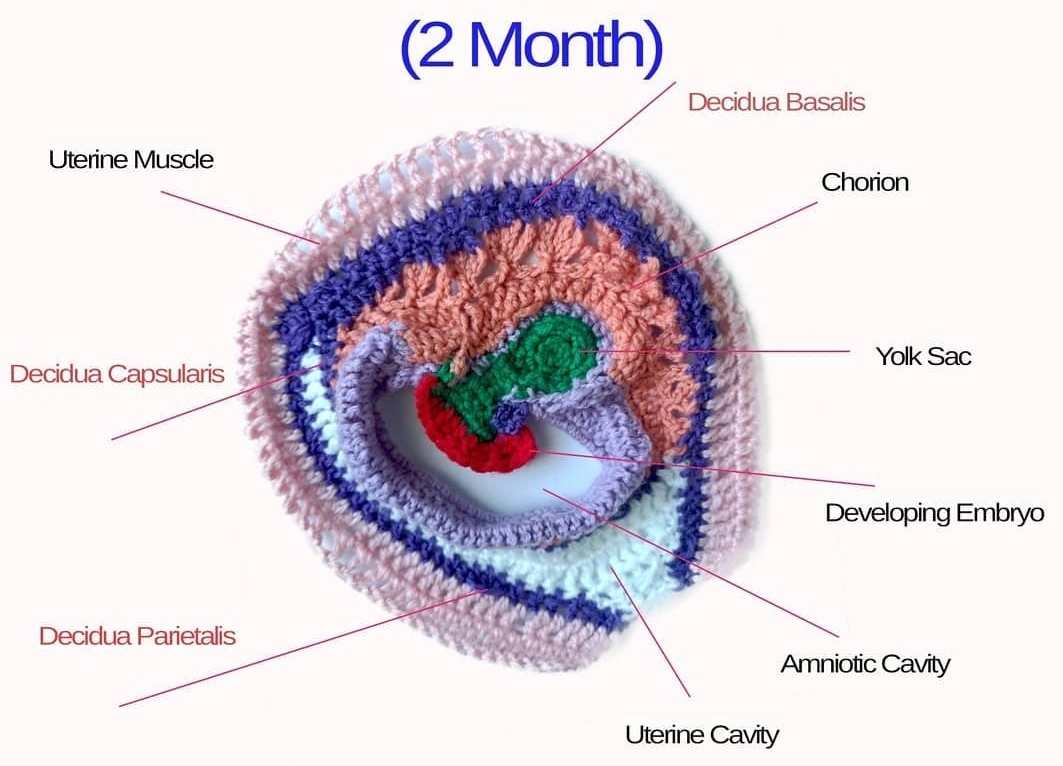Crocheted embryo models — featured artwork from the Node-BSDB virtual art exhibition
Posted by the Node, on 4 December 2023
In the recent BSDB-the Node virtual art exhibition, Tahani Baakdhah’s crocheted embryo models were selected as the Judges’ Choice runner-up in the ‘Science-inspired art’ category. We briefly caught up with Tahani to find out more about her research and the story behind the creation of the artwork.
Crocheted models of embryonic development
Tahani Baakdhah (Krembil Research Institute, University of Toronto)
Crocheted model of 5 days, 1 week, 2 weeks and 2 months gestational embryonic development.




What is your background?
I am a retinal stem cell researcher currently working as a postdoc fellow at the Donald K. Johnson Eye Institute – Krembil Brain Institute (University of Toronto) with a background in medicine, molecular genetics and stem cell biology.
What are you currently researching on?
I am working on developing an enrichment protocol using a 3D retinal organoid system in order to replace the retinal neuron most commonly lost in glaucoma called the retinal ganglion cells.
Can you tell us more about the story behind the creation of the crocheted embryo models?
I created this model during my PhD to explain my project during my participation in public science events in Toronto. Using this model, I tell my audience the story of human embryonic development and how the retina was built in order to see the world around us.
As a science communicator, I like to be creative in explaining complex science concepts. This will make science easy to understand and fun to learn.
You were featured in our SciArt series in May 2022. What have you been working on since, and what are you thinking of working on next?
Since then, I have been working on a new retinal collection. After crocheting all retinal neuron types (my book can be purchased on Amazon ), I have decided to crochet the subtypes of each retinal neuron starting with the retinal ganglion cells (full project was shared on my instagram page). When completed, this project will help both scientists and the general public understand the physiology and the function of the retina despite its complexity.
Check out Tahani’s full SciArt profile.
Find more about Tahani’s work:
- Twitter: @Thepurplelilac
- Instagram: @Thepurplelilac
- website
- Etsy


 (1 votes)
(1 votes)
These are wonderful! What a great way to communicate some really difficult concepts in biology. You may already know that textile production is one of the earliest western metaphors of embryonic development. Versalius called his 1543 book De Humani Corporis Fabrica, and that may relate to Psalm 139:13-15’s depiction of the human embryo as being woven into existence.
I’ve written some papers on art and embryology that may be of interest to those reading this:
Gilbert, S. F. and Faber, M. 1996. Looking at embryos: The visual and conceptual aesthetics of emerging form. In The Elusive Synthesis: Aesthetics and Science (A. I. Tauber, editor). Kluwer Academic Publishers, Dordecht. pp. 125 – 151.
Gilbert, S R. and Gilbert, S. F. 2023. Process epistemologies for the careful interplay of art and biology: An afterword. Drawing Processes of Life (ed. G. Anderson, J. Dupré). Intellect Books, Bristol, UK. (Open access at https://doi.org/10.2307/jj.6947019.17
Gilbert. S. F. and Braukmann, S. 2011. Fertilization narratives in the art of Gustav Klimt, Diego Rivera, and Frida Kahlo: Repression, Domination, and Eros among cells. Leonardo 44: 221 – 227.
In these papers, I cite Robert Root-Bernstein’s work, which is really important.
Thanks for showing us these crocheted embryo models!
Thank you for the kind support. This will motivate me to make more development/embryology science models and challenge my own creativity. Art is a universal language that crosses borders and it is a great tool to communicate and simplify complex science concepts. The creativity in selecting the suitable art medium also matters. A reason why I am using crochet to translate science to a simple language everyone can easily understand.
Thanks for sharing the papers, I will check them out.